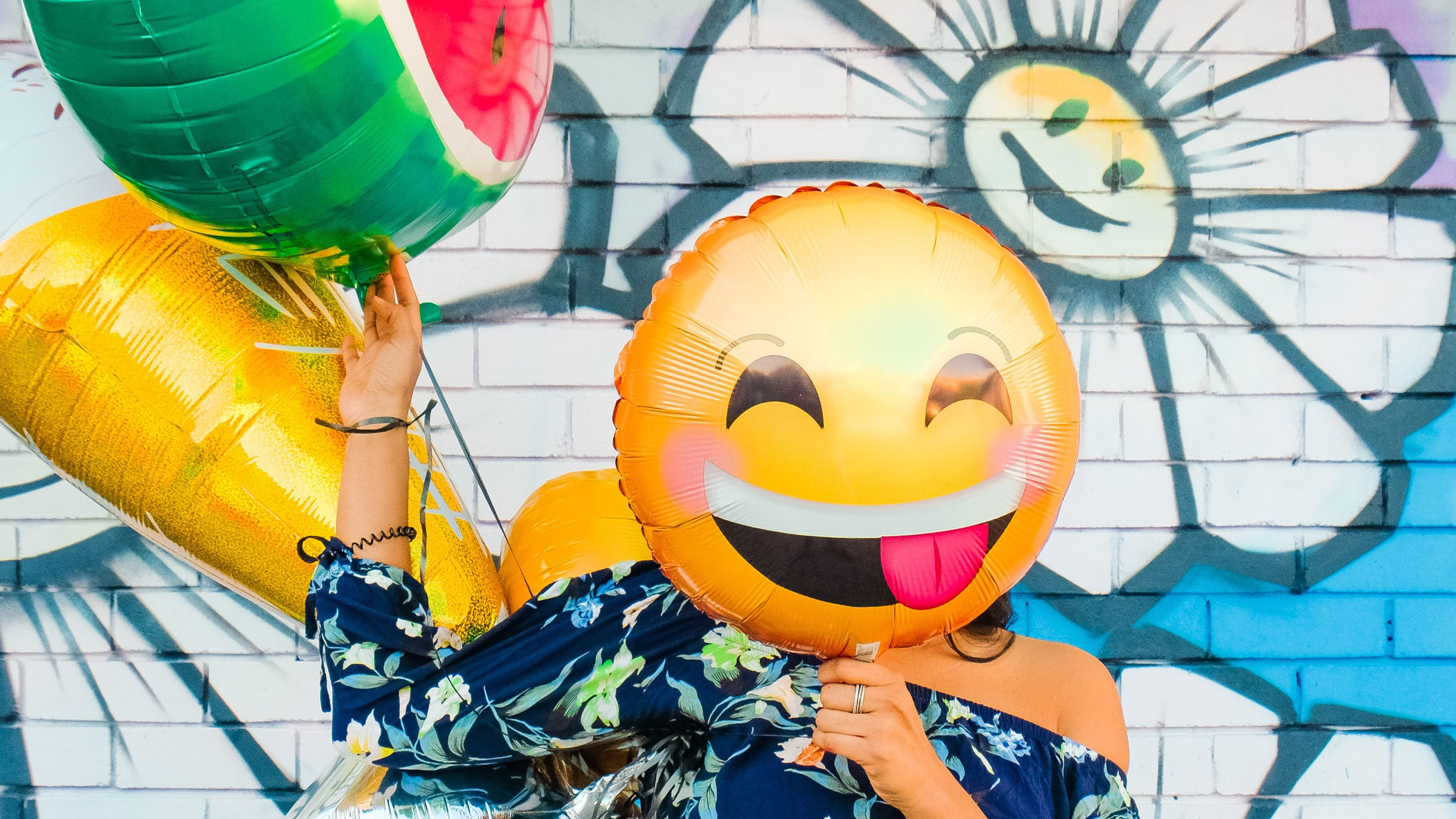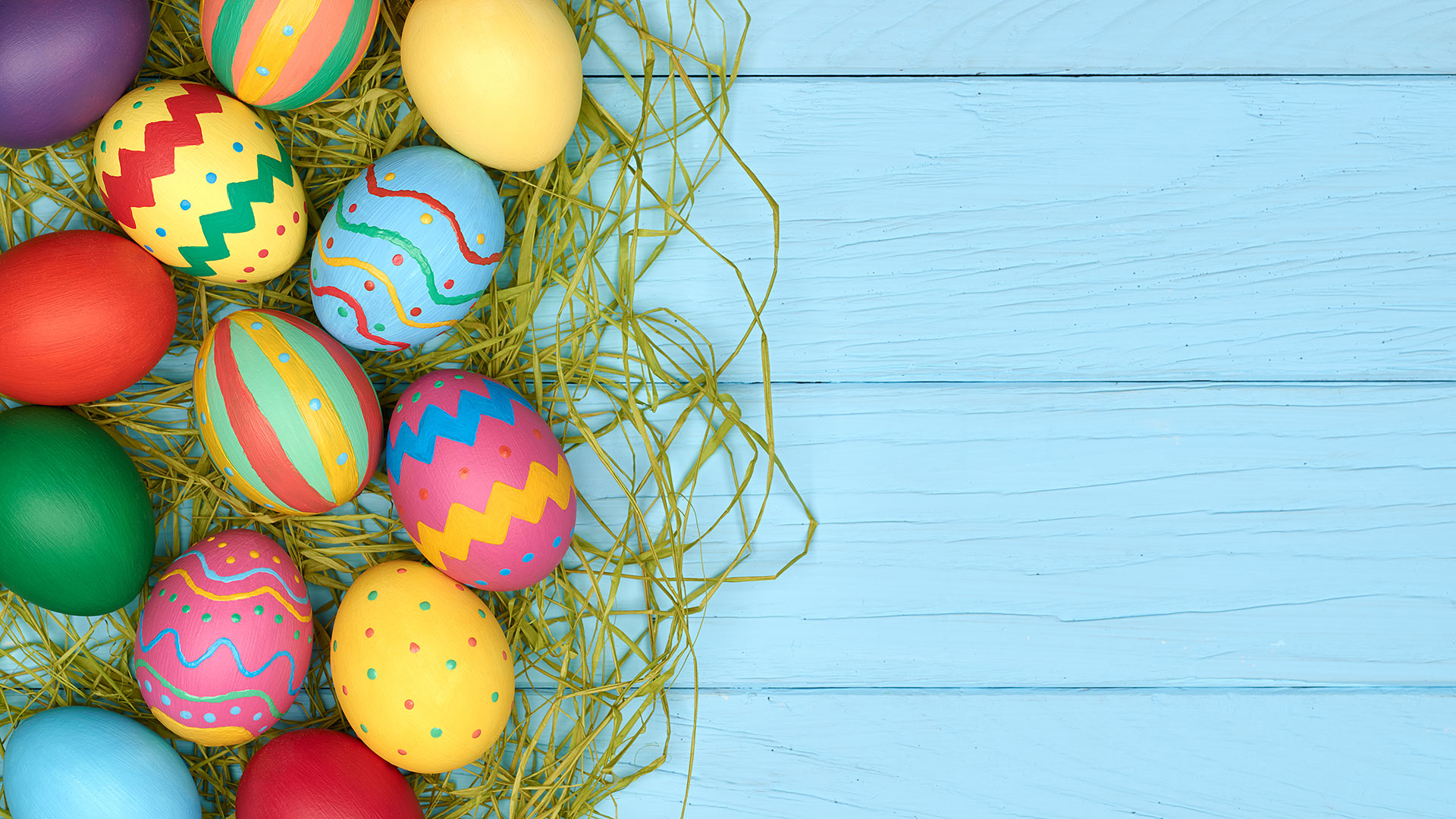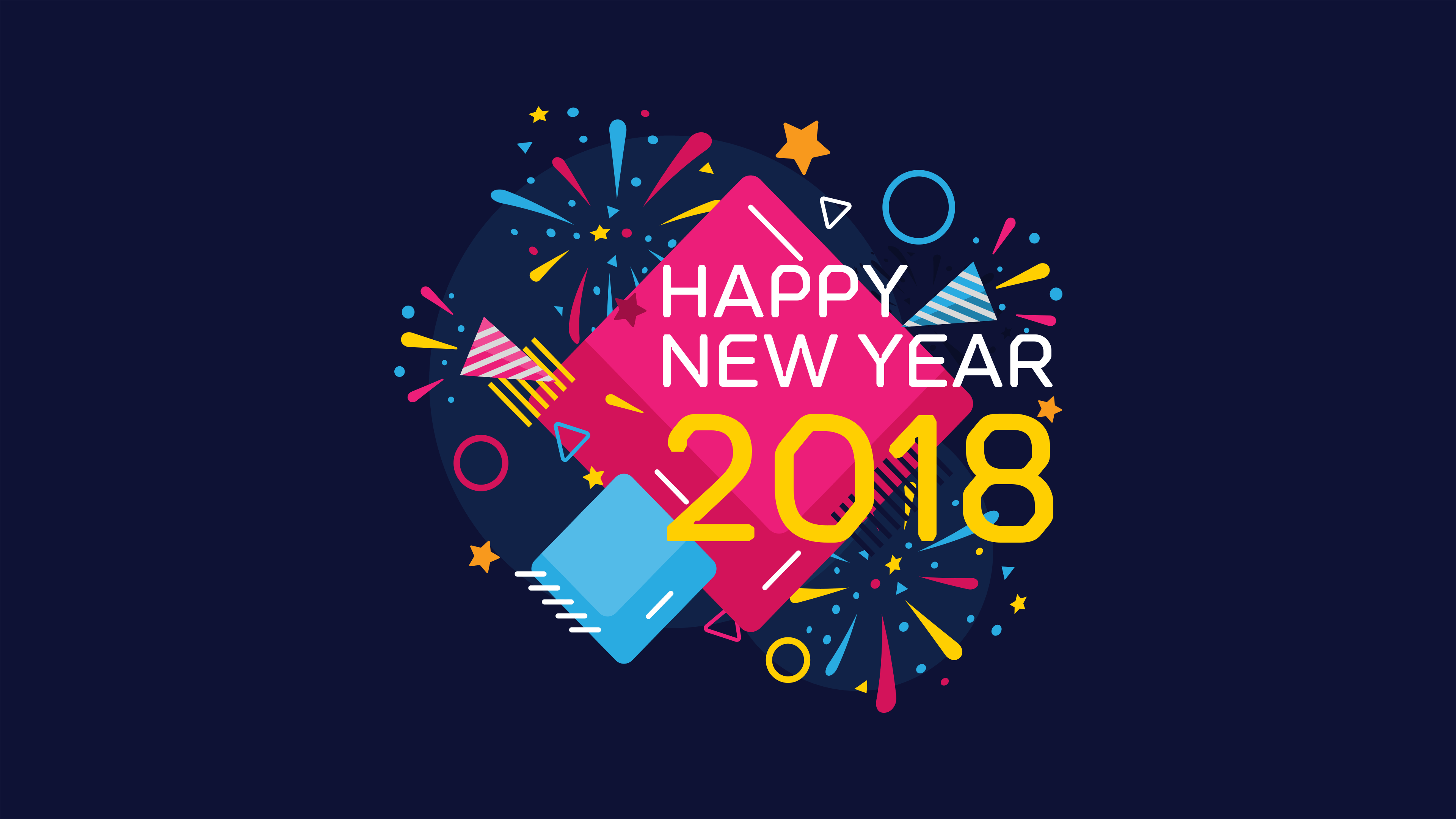Emoji have gone beyond being a simple way to communicate emotions to a fully-fledged cultural phenomenon.
The word ’emoji’ was an Oxford Dictionary Word-of-the-Year winner in 2015. And they were even turned into a 2017 movie that generated over $200 million.
? Why July 17?
July 17 is famously displayed on the ? Calendar Emoji. That is why it was chosen as the date for World Emoji Day. ?However, the day is much bigger than just one emoji. World Emoji Day is a celebration of all emojis.
2019 Emoji Trend Report
In celebration of emojis, Adobe released its 2019 Emoji Trend Report, giving us some insight into the most popular emoji characters that people are using. For its report, Adobe surveyed 1,000 emoji users in the United States.
The most popular emoji was the laughing face with tears of joy (?), while the heart (❤️) came in second and the face blowing a kiss (?) was the third. Top pairings included heart eyes/face blowing a kiss (??), laughing face with tears of joy/rolling on the floor laughing face (??), and face blowing a kiss/red heart (?❤️).
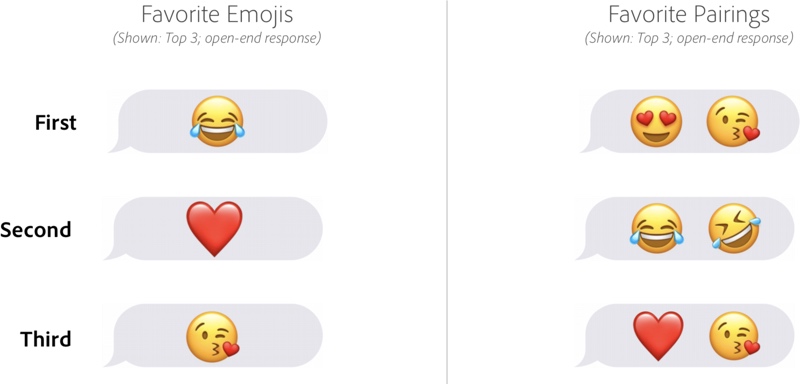
Among emoji users, 62 percent said they use emoji to make conversations more fun. 42 percent said they use them to better communicate thoughts and feelings. 31 percent said they use emoji to feel more connected to people. Another 31 percent said using emojis is faster than typing words, and 30 percent, almost a third said they use emojis because they paint a clearer picture than words.
Women were most likely to use the ?, ❤️, and ? emojis, respectively, while men favored ?, ?, and ?. 93 percent of all emoji users said emojis lighten the mood of a conversation. 91 percent of them said they use emojis to show support to people.
Emojis, by association.
Adobe’s graphic below outlined specific emojis that are used to represent different moods:
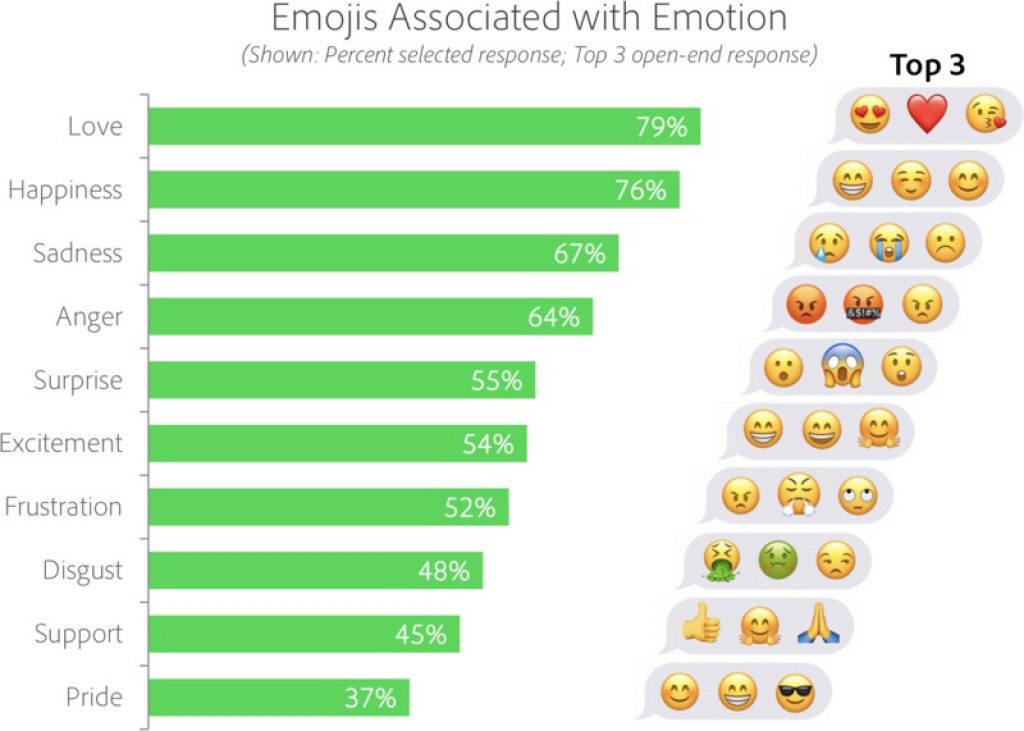
81 percent of emoji users believe that people who use emojis are friendlier and more approachable. When asked about the benefits of emoji, 94 percent believed that they communicate across language barriers better. 94 percent believe emoji helps them instantly share thoughts and ideas.
65 percent of emoji users said they were more comfortable expressing emotions via emoji rather than a phone call, mainly because they are more prevalent among younger Generation Z individuals. Gen Z’s are also more likely to include emojis in text messages, and they tend to be the most popular with Facebook users.
Emojis at work?

When it comes to emoji at work, a whopping 61 percent said that they use emojis in a work context. That is to say, if you want to be more likeable at work, appear more credible and be a more ‘positive‘ person, use emojis in your daily communications. 78 percent said emojis positively impact likability. 63 percent said emojis impact credibility, and 74 percent said emojis make positive news more sincere.
As we scoured the report, we found this particular fact interesting. 58 percent of emoji users said they’re more likely to open up an email that uses emoji in the subject line. 44 percent said that they’re more likely to purchase products advertised using emojis.
76 percent of emoji users wish there were more emoji. They want more emojis representing food, drinks, and snacks. In the same vein, they also want more emojis related to animals, insects, emotions, and hand gestures, plus more representation / diversity.
Emoji at Scellus
From the Adobe reports, we did the same exact survey within Scellus, and here are the most popular ‘new‘ emojis from our Slack channels.
- ?
- ?
- ?
?♀️ How are people celebrating World Emoji Day? ? ? ?
Get Adobe’s full emoji report
Adobe’s full emoji report, which includes additional details on how, when, and why people use emojis, can be accessed through Adobe’s emoji blog.
Continue reading ↘
Happy Easter!
April 9, 2019
It’s 2018. Happy New Year.
January 1, 2018
Identify trends that can stimulate small business growth
August 17, 2018
